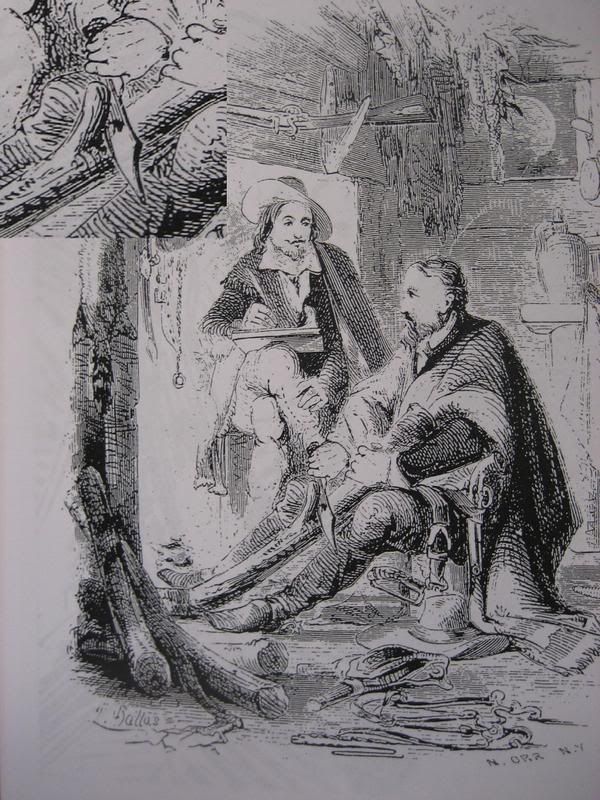- Joined
- Aug 25, 2003
- Messages
- 6,561
- Reaction score
- 1,568
Mike, I totally respect your opinion in this, and can disagree with very little of what you say, however the brass in the guard contains traces of phosphorous, and bauxide, both common in the area of Washington Arkansas, and in the sand that would have been used in the casting. How common would that be in a fake? I don't know, I'm asking. In the 1855 memoirs of S. Houston is a sketch done by the cousin of a friend of Houston's showing Houston using a Bowie of the nearly exact design. I do realize that a faker could have seen this illustration and used it to design a fake. Again I don't know. Lab analysis of the blade show it to be of shear steel, charcoal forged. Why would a faker go that far, and how many people even knew how to forge shear steel before Bill Moran revived it in the early seventies. I know that in Europe, what many call damascus, was still being done on a limited scale, but again, why would a faker go that far? I think it would be interesting to have an independent lab do some fresh testing, but I doubt that will happen. It might also be interesting to have a wood sample carbon dated. The sample could be taken from inside the grip with no damage to the appearance of the knife, but that ain't gunna happen either, without Musso's cooperation. He has stated that such a sample would require a half inch piece, but with todays technology, I believe it could be done with much less. A last, although minor point probably, the butt cap, or plug is missing, and the nut screwed on the tang appears to be sort of quick fix, old, but not as old as the knife is supposed to be. Another, why bother to carry a fake that far.
And that post a ways above this one, wanted to know what is the controversy about! If he continues to read, he will certainly learn. I find myself more in the middle of the pro, and con, with more questions than answers, but I would hesitate to call it a fake, based on the examples I've offered, and many others I did not. A good post Mike.
And that post a ways above this one, wanted to know what is the controversy about! If he continues to read, he will certainly learn. I find myself more in the middle of the pro, and con, with more questions than answers, but I would hesitate to call it a fake, based on the examples I've offered, and many others I did not. A good post Mike.







